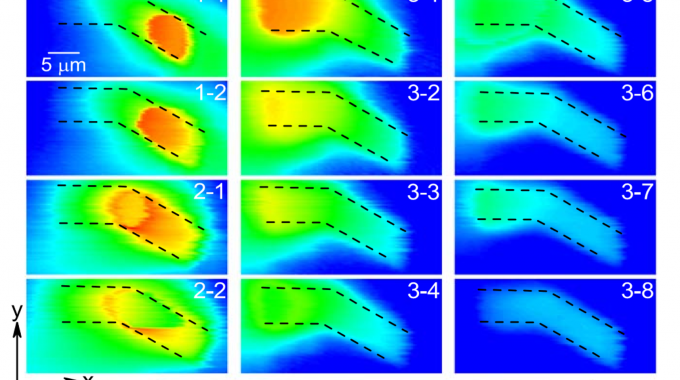
Hot spot formation in a curved iron-based superconducting whisker
Authors: X J Zhou, Z S Gao, L Han, L Y Xiao, T Hatano, J Li, D Koelle, R Kleiner, H B Wang and P H Wu
Supercond. Sci. Technol. 32 (2019) 025010
Abstract:
We investigated the transport properties of a curved iron-based superconducting whisker, a geometry which is considered to be interesting for electronic applications. The current–voltage characteristics (IVCs) are bi-stable at low temperatures, exhibit multiple branches at intermediate temperatures and are continuous but nonlinear at temperatures close to the superconducting transition temperature Tc. Low temperature scanning laser microscopy revealed that the multiple branches arise from a localized hot spot which for the different branches appears at different positions along the whisker. By contrast, at low temperatures Joule heating completely overheats the sample to temperatures above Tc in the resistive state. Close to Tc, the hot spot disappears and the IVCs are continuous. In the multiple-branch region, the whisker can be switched between different states by laser irradiation, provided that the laser is positioned at the location of the hot spot. The effect could be interesting for using the whisker as a photon detector or as a positionsensitive opto-electronic switch.
DOI: doi.org/10.1088/1361-6668/aaf9f0
